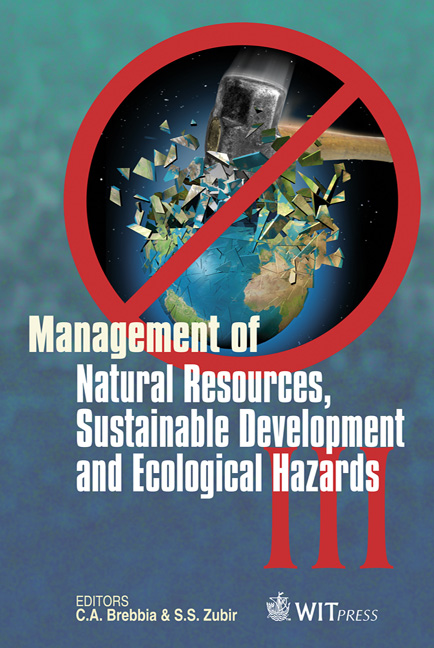Investigation And Management Of Water Pollution Sources In Cameron Highlands, Malaysia
Price
Free (open access)
Transaction
Volume
148
Pages
11
Page Range
231 - 241
Published
2011
Size
670 kb
Paper DOI
10.2495/RAV110221
Copyright
WIT Press
Author(s)
M. Eisakhani, A. Pauzi, O. Karim & A. Malakahmad
Abstract
The water quality of rivers in Cameron Highlands has deteriorated significantly due to land clearing for agriculture, excessive usage of pesticides and fertilizers as well as construction activities in rapidly developing urban areas. It has been investigated that non-point pollution sources (NPSs) are the main contributor of this water quality drop. NPSs are diverse and hard to identify and therefore they are difficult to estimate. Therefore, Geographical Information Systems (GIS) was used to provide an extensive approach to evaluate land use and other mapping characteristics to explain the spatial distribution of NPSs of contamination in Cameron Highlands. The method to assess pollution sources has been developed using Cameron Highlands Master Plan (2006-2010) for integrating GIS databases, as well as pollution loads in the area of study. The results show highest annual runoff is created by forest, 3.56×108 m3/yr followed by urban development, 1.46×108 m3/yr. Furthermore, urban development causes highest BOD load (1.31×106 kgBOD/yr) while agricultural activities and forest contribute the highest annual loads for phosphorus (6.91×104 kgP/yr) and nitrogen (2.50×105 kgN/yr), respectively. Therefore, Non-structural management was recommended for the study area, which includes establish and provide technical advisory services unit, develop demonstration farms and provide incentives to encourage farmers in implementing sustainable agricultural management practices. Keywords: water pollution sources, non-structural management, Cameron Highlands.
Keywords
water pollution sources, non-structural management, Cameron Highlands





